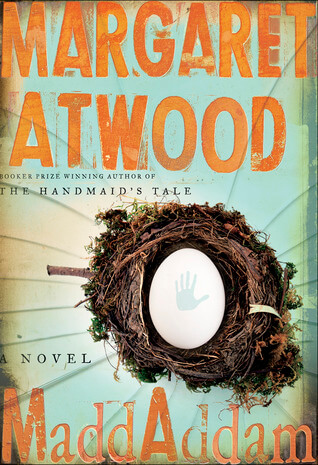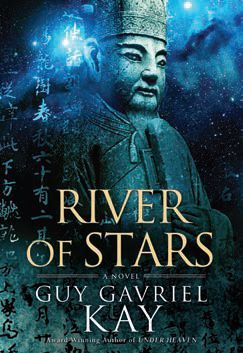The end of the world has come and gone, and a handful of humans and post-humans are left in its wake. In MaddAddam, Margaret Atwood returns to the near-future apocalyptic world of Oryx & Crake and The Year of the Flood to tell us what happens next. Sort of.
“There’s the story, then there’s the real story, then there’s the story of how the story came to be told. Then there’s what you leave out of the story. Which is part of the story too.”
– MaddAddam, by Margaret Atwood
The end of the world has come and gone, and a handful of humans and post-humans are left in its wake. In MaddAddam, Margaret Atwood returns to the near-future apocalyptic world of Oryx & Crake and The Year of the Flood to tell us what happens next. Sort of.
Before I can talk about MaddAddam, some background: I’ve had a difficult relationship with this series. I love much of Atwood’s wit and cutting social commentaries, especially in books such as The Handmaid’s Tale, Good Bones and Simple Murders, and Lady Oracle. I enjoyed Oryx & Crake very much: an allegorical tale that examined transhumanism, genetic engineering, and all-powerful corporations in a mega-capitalistic near future. But then The Year of the Flood arrived, and I was so let down. The neat, clever lessons had been taken away from their allegorical underpinnings and thrust into a real-world setting. Suddenly more characters were operating within the parameters of a world I had never read as “real,” and certain things really grated for me as a reader.
The puns, especially: “breast implants,” for example, has been contracted to “bimplants.” And yes, isn’t it clever that the kind of women who want bigger boobs—bimbos—now have bimpants instead of implants. I see what you did there, and it works in an allegory. It doesn’t work in a world that is honestly meant to be ours in a hundred years. I can’t make the linguistic leap and see that actually happening. This is nitpicky, yes, but it’s one example that illustrates a number of features of this new world that I’m not buying. Secret Burgers made from any available meat source including people, genetic hybrid animals with clunky, awful names like “rakunks” and “pigoons,” and the pulsing, coursing, overwhelming chauvinism and sexism of basically every male who ever lived just don’t add up to a believable future world and therefore diminished greatly the narrative power of Flood.
So, then, I was anxious and hopeful for what MaddAddam would hold. And for the most part, I was pleasantly surprised. The third book of the trilogy picks up immediately after the events of Flood. The strange genetically created Crakers, who cannot eat animal protein, whose genitals turn blue when they’re ready to mate, and who have no concept of violence, have joined the last survivors of the God’s Gardeners cult from Flood. Several of the Gardener women have been raped by a group of “painballers”—vicious criminals who have survived the punishing “painball” arena and emerged with no shred of humanity left—and then again by the misunderstanding Craker men, who think they are in heat. Toby, the most interesting main character of Flood, Ren, Amanda, Jimmy the Snowman, and the Crakers find the rest of their group and begin the task of surviving the Painballers, and this new world.
Most of the narrative takes place in the past. MaddAddam is much more an examination of Toby’s lover Zeb, and Zeb’s brother Adam (Adam One of Flood) than it is the next phase of life for these characters. From their upbringing as the children of a morally corrupt and sexually deviant preacher father, they escape into the real world and fall in with the various genetic corporations introduced in Oryx. Like Flood, much of MaddAddam’s narrative overlaps with the other two books, providing another dimension and another set of stories to the overall story we already know. While Glenn is busy becoming Crake and creating his new perfect race, Zeb is hiding out from his father’s vast reach up in the wilds of the arctic. We get to see the lives that brought Adam and Zeb to the MaddAddam project and the Gardeners.
Most of this is told via the narrative device of the Crakers’ demands for stories. The Crakers are all about origin stories, of their own beginning and of how the Gardeners around them came to be. So some parts of the stories are overemphasized or idealized, while some have to be reframed or excised entirely. MaddAddam is very much Atwood’s meditation on what storytelling is, how it is done, what it is for. The story changes depending on who is doing the telling, the purpose of the telling, the audience. Toby sometimes retells to the Crakers a story that Zeb has told to her, and we can see the emphases and elisions. Events will be remembered differently than they “really” happened, and the “truth” will change as the Crakers come to understand the world around them and what came before them. Much of this is steeped in a kind of pseudo-religious imagery.
And that’s really the main thrust of the book. Technology has pretty much failed humanity, and as we learned earlier in the trilogy, we brought on our own demise through our own greedy, deviant proclivities. The Crakers and the Gardeners begin to sort out what their lives are going to be but we don’t get to see very much of this, which is frustrating. Also frustrating is the relentless Second Wave feminism that laces the entire trilogy. A hundred years into the future, is Atwood really saying the kind of 1970s binary of repressed, objectified women/rapey alpha men will be the only way men and women relate to each other? Even the Crakers with their giant blue penises trying to mate forcefully with any Craker or non-Craker woman “in heat” is distasteful, an unsubtle and disappointing examination of gender politics. Atwood is capable of nuance and this just feels lazy.
Atwood would have done well to keep the world of Oryx & Crake as a cautionary tale, not a fleshed out, unbelievable world. By turns too clever-clever and too apathetic, it leaves the reader frustrated and wanting far more. That said, Zeb and Adam’s pasts are interesting, and the exploration of the nature of story itself is completely worth the read.
Three out of five blue pencils
Review copy provided to me by McClelland & Stewart in exchange for a fair review.
The Year of the Flood by Margaret Atwood, published in Canada by McClelland & Stewart, © 2013
Available at Amazon, Indigo, and fine independent bookstores everywhere via Indiebound.
You might also like:
|
Review of The Mad Scientist’s |





I relate to all of your reactions! I was obsessed with Oryx, diasppointed in Flood, and happy with Maddaddam though it never lived up to the promise or Oryx. Maddaddam had a really strong ending though, which is quite a feat in an uneven series.
One of thing that coloured my reactions to Flood and Maddaddam was that I missed Jimmy as a narrator. Really badly. Zeb and Adam and Toby are interesting but I never cared about them like I did Jimmy.
I agree completely. Jimmy’s was a wonderful narrative voice.
In a weird way, I can almost see puns like “bimplants” as believable for our future. It’s 2013 and the word “literally” means either literally or figuratively because there are too many idiots shaping our language. Let’s just say I’m not optimistic about our future. Linguistic or otherwise. 😛
Haha. True enough! I find things like bimplants and mo’hairs and Seksmart just irritating, too winky-winky to be believable, even as a saitire.